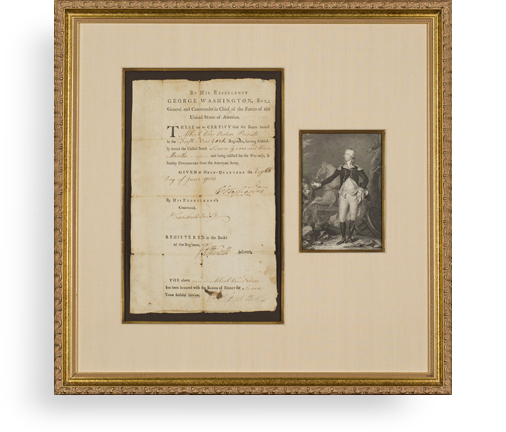Sold – Barton Praises the American People For Contributing “Great Sums” to Aid Johnstown Flood Victim
The only letter of Barton we have seen from The Johnstown Flood, the first major peacetime relief effort for the American Red Cross.
The Johnstown Flood was the geatest disaster of its time. It occurred on May 31, 1889, and was the result of the catastrophic failure of the South Fork Dam situated 14 miles upstream of the town of Johnstown, Pa., made worse by several days of extremely heavy rainfall. The dam’s failure unleashed...
The Johnstown Flood was the geatest disaster of its time. It occurred on May 31, 1889, and was the result of the catastrophic failure of the South Fork Dam situated 14 miles upstream of the town of Johnstown, Pa., made worse by several days of extremely heavy rainfall. The dam’s failure unleashed a torrent of 4.8 billion gallons of water, which destroyed the town and killed over 2,200 people. The tragedy riveted the nation’s attention, and there was no larger news story in the latter 19th century.
Clara Barton and a circle of acquaintances founded the American Red Cross in Washington, D.C. on May 21, 1881. Originally thought of as primarily a battlefield relief organization, Barton felt the Red Cross could also provide relief for peacetime disasters. The Johnstown flood provided an ideal opportunity, and Barton seized it, arriving with five other Red Cross workers in Johnstown on June 5, just five days after the flood occurred. The Johnstown flood became the first major peacetime relief effort of the American Red Cross. Under Barton’s direction, the Red Cross received contributions and distributed new and used supplies valued at $211,000, a huge sum then. Some 25,000 people were helped out of a population of 30,000. The success of this effort justified the direction in which Barton wanted to take the organization, and it became the prototype for innumerable Red Cross activities afterwards.
Autograph Letter Signed, on her American Red Cross letterhead, Johnstown, Pa., August 1, 1889, to G.H. Backus of the First Methodist Episcopal Church, the parishioners of which were donating money to aid flood victims. “Please find enclosed receipt for two money orders $50 & $16 = $66 contribution from the 1st M.E. Church of Clinton, Iowa for the relief of the sufferers from the floods. Accept through me the thanks of those for whom the gift is sent, and believe with me that the people have done their entire duty. The great sums are now to be distributed, and I think no more should be sent. Very truly yours, Clara Barton, Pres. Am. Red Cross.” It is interesting that Barton thought she had enough contributions and was turning her attention to distributing the aid.
A Barton ALS from Johnstown about Red Cross flood relief is so unusual that we do not recall seeing another, and our search of public records covering the last 30 years reveals none that have reached the market in that venue.

Frame, Display, Preserve
Each frame is custom constructed, using only proper museum archival materials. This includes:The finest frames, tailored to match the document you have chosen. These can period style, antiqued, gilded, wood, etc. Fabric mats, including silk and satin, as well as museum mat board with hand painted bevels. Attachment of the document to the matting to ensure its protection. This "hinging" is done according to archival standards. Protective "glass," or Tru Vue Optium Acrylic glazing, which is shatter resistant, 99% UV protective, and anti-reflective. You benefit from our decades of experience in designing and creating beautiful, compelling, and protective framed historical documents.
Learn more about our Framing Services







































































































